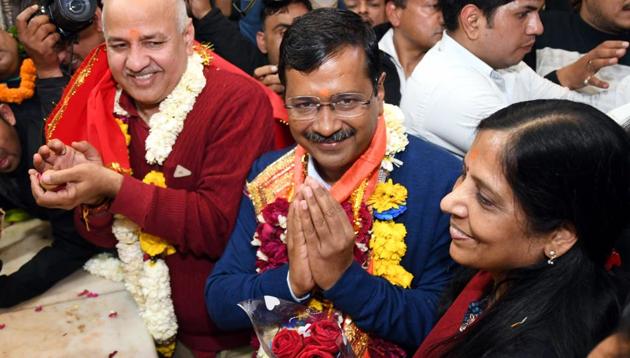Five factors behind Arvind Kejriwal-led AAP’s sweep 2.0 in Delhi assembly election
With 53.6& vote share, the AAP swept Delhi again, winning 62 seats. We take a look at the five factors that led to AAP’s stellar performance
1. Massive pro-incumbency: The Aam Aadmi Party‘s (AAP) back-to-back victories in Delhi in 2015 and 2020 are only the second instance of a party getting more than 50% vote share in consecutive state elections in an important state. The only previous example is the Congress’s Gujarat victories in 1980 and 1985. Even the Bharatiya Janata Party (BJP), for all its dominance in some states (including Gujarat), has not been able to achieve this. Analysts attribute this to Chief Minister’s Arvind Kejriwal’s popularity and AAP’s welfare agenda.


2. State is not the Centre: The AAP’s electoral fortunes are the perfect example of how Indian voters differentiate between national and local elections. The BJP crossed the 50% vote share in the Lok Sabha elections in 2014 and 2019 in Delhi, and the AAP in assembly elections in 2015 and 2020. The same factor helped the BJP when it lost key states such as Madhya Pradesh and Rajasthan in late 2018, and then bounced back to sweep the Lok Sabha elections in these states.

3. Bipolarity math went against BJP: Headline vote share numbers suggest that it is the BJP which has gained more from the Congress’s collapse from 9.7% in 2015 to 4.3% in 2020 in terms of vote share. But it didn’t gain nearly enough. And the Congress ended up doing more harm to the BJP than the AAP. The former lost six seats on account of the Congress playing spoiler (if the Congress votes in these constituencies are added to the BJP’s, the latter would have won). AAP, in contrast, lost only two because of the Congress playing spoiler.

4. Uniform support for AAP: A Lok Sabha constituency-wise analysis shows that the AAP received at least 50% votes across Delhi. It actually increased its vote share compared to 2015 in four of the seven areas. It lost vote share in three, though, but not enough to hurt it. The difference between the highest and lowest vote shares of AAP across Lok Sabha constituencies (5.5 percentage points) is the lowest in this election among all the five elections -- three state and two national -- the party has fought in Delhi since 2013.

5. Polarisation may not have paid off: The BJP’s vote share in 2020 is its second highest in assembly elections since 1993, and six percentage points more than the 2015 figure of 32.3%. But it is significantly less than the 56% which it got during the 2019 Lok Sabha elections. And the extent to which the increase can be attributed to polarisation is debatable. For instance, an analysis by Neelanjan Sircar shows that the BJP did well in areas with unauthorised colonies (which it regularised).







